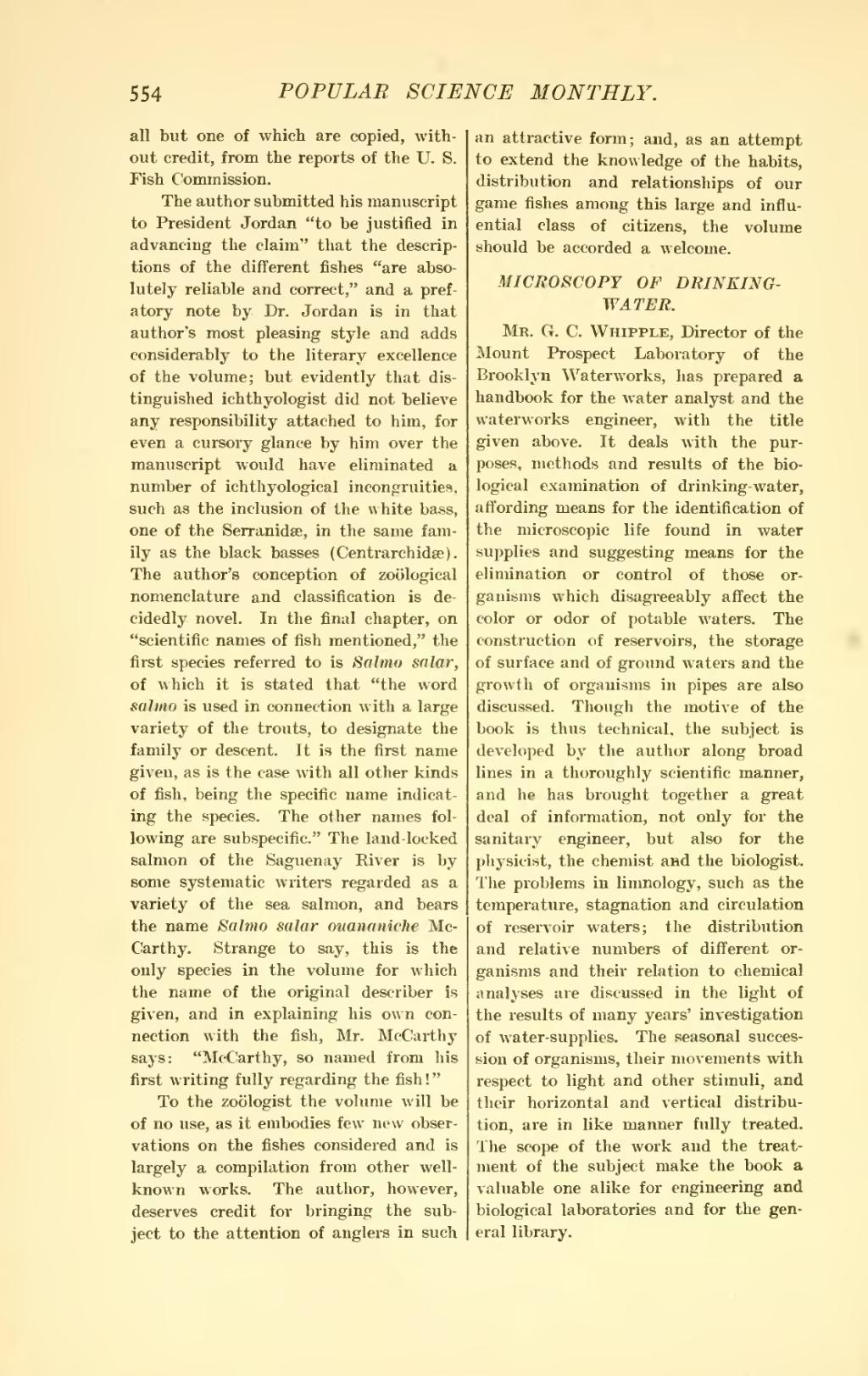all but one of which are copied, without credit, from the reports of the U. S. Fish Commission.
The author submitted his manuscript to President Jordan "to be justified in advancing the claim" that the descriptions of the different fishes "are absolutely reliable and correct," and a prefatory note by Dr. Jordan is in that author's most pleasing style and adds considerably to the literary excellence of the volume; but evidently that distinguished ichthyologist did not believe any responsibility attached to him, for even a cursory glance by him over the manuscript would have eliminated a number of ichthyological incongruities, such as the inclusion of the white bass, one of the Serranidæ, in the same family as the black basses (Centrarchidæ). The author's conception of zoölogical nomenclature and classification is decidedly novel. In the final chapter, on "scientific names of fish mentioned," the first species referred to is Salmo salar, of which it is stated that "the word salmo is used in connection with a large variety of the trouts, to designate the family or descent. It is the first name given, as is the case with all other kinds of fish, being the specific name indicating the species. The other names following are subspecific." The land-locked salmon of the Saguenay River is by some systematic writers regarded as a variety of the sea salmon, and bears the name Salmo salar ouananiche McCarthy. Strange to say, this is the only species in the volume for which the name of the original describer is given, and in explaining his own connection with the fish, Mr. McCarthy says: "McCarthy, so named from his first writing fully regarding the fish!"
To the zoölogist the volume will be of no use, as it embodies few new observations on the fishes considered and is largely a compilation from other well-known works. The author, however, deserves credit for bringing the subject to the attention of anglers in such an attractive form; and, as an attempt to extend the knowledge of the habits, distribution and relationships of our game fishes among this large and influential class of citizens, the volume should be accorded a welcome.
MICROSCOPY OF DRINKING WATER.
Mr. G. C. Whipple, Director of the Mount Prospect Laboratory of the Brooklyn Waterworks, has prepared a handbook for the water analyst and the waterworks engineer, with the title given above. It deals with the purposes, methods and results of the biological examination of drinking-water, affording means for the identification of the microscopic life found in water supplies and suggesting means for the elimination or control of those organisms which disagreeably affect the color or odor of potable waters. The construction of reservoirs, the storage of surface and of ground waters and the growth of organisms in pipes are also discussed. Though the motive of the book is thus technical, the subject is developed by the author along broad lines in a thoroughly scientific manner, and he has brought together a great deal of information, not only for the sanitary engineer, but also for the physicist, the chemist and the biologist. The problems in limnology, such as the temperature, stagnation and circulation of reservoir waters; the distribution and relative numbers of different organisms and their relation to chemical analyses are discussed in the light of the results of many years' investigation of water-supplies. The seasonal succession of organisms, their movements with respect to light and other stimuli, and their horizontal and vertical distribution, are in like manner fully treated. The scope of the work and the treatment of the subject make the book a valuable one alike for engineering and biological laboratories and for the general library.
